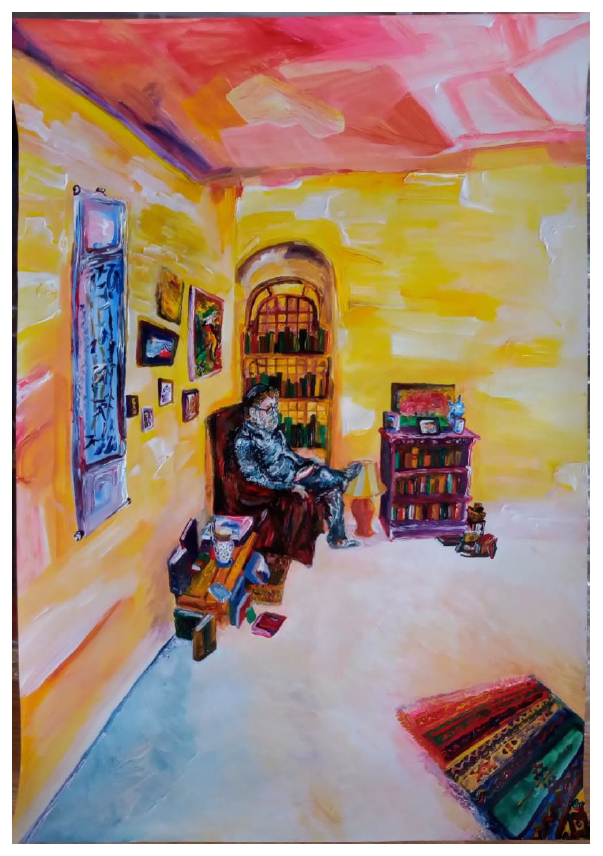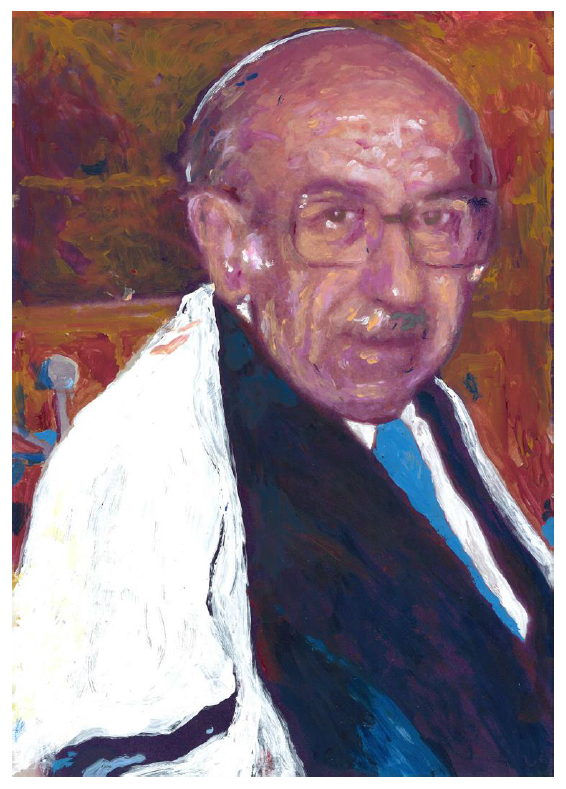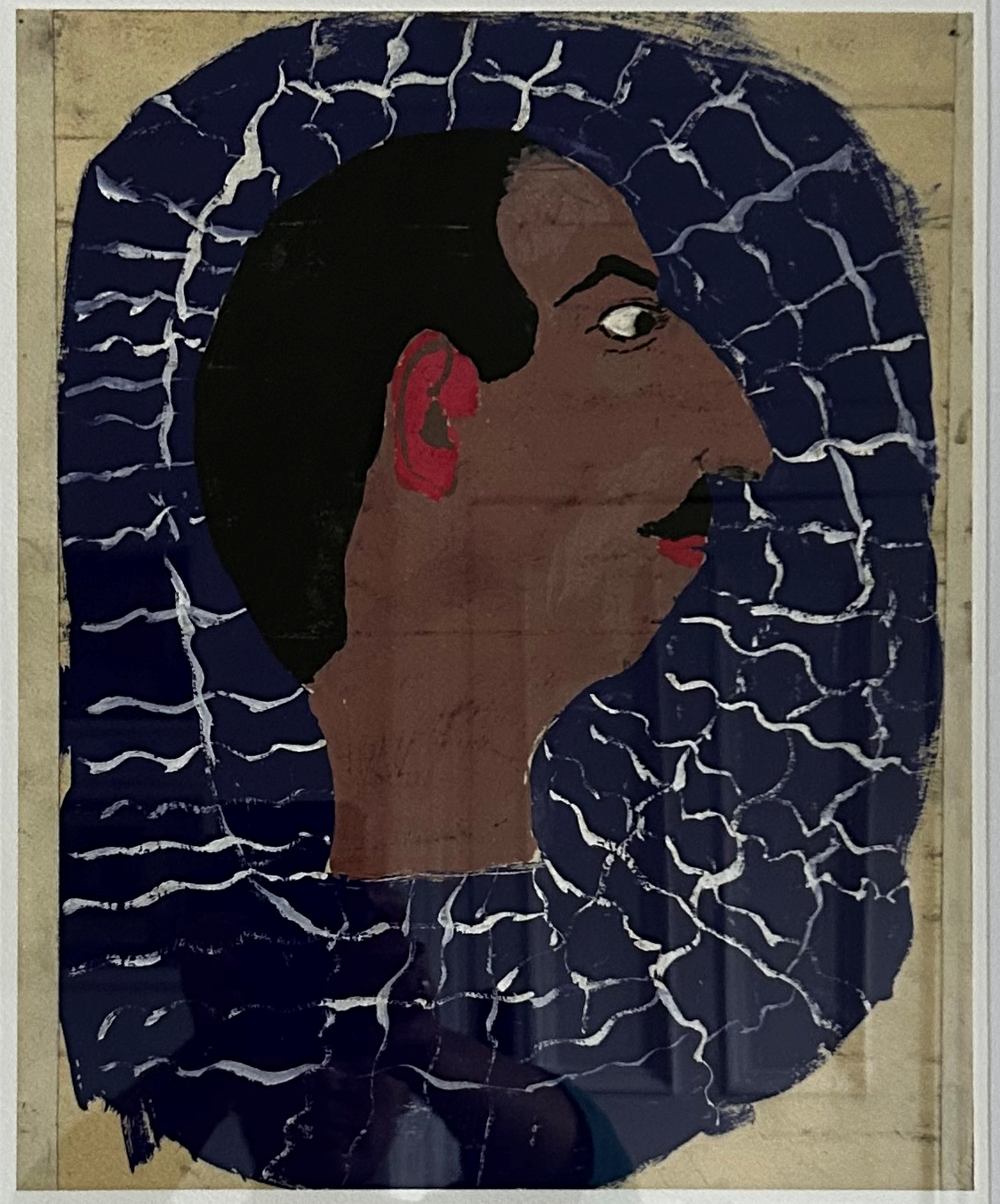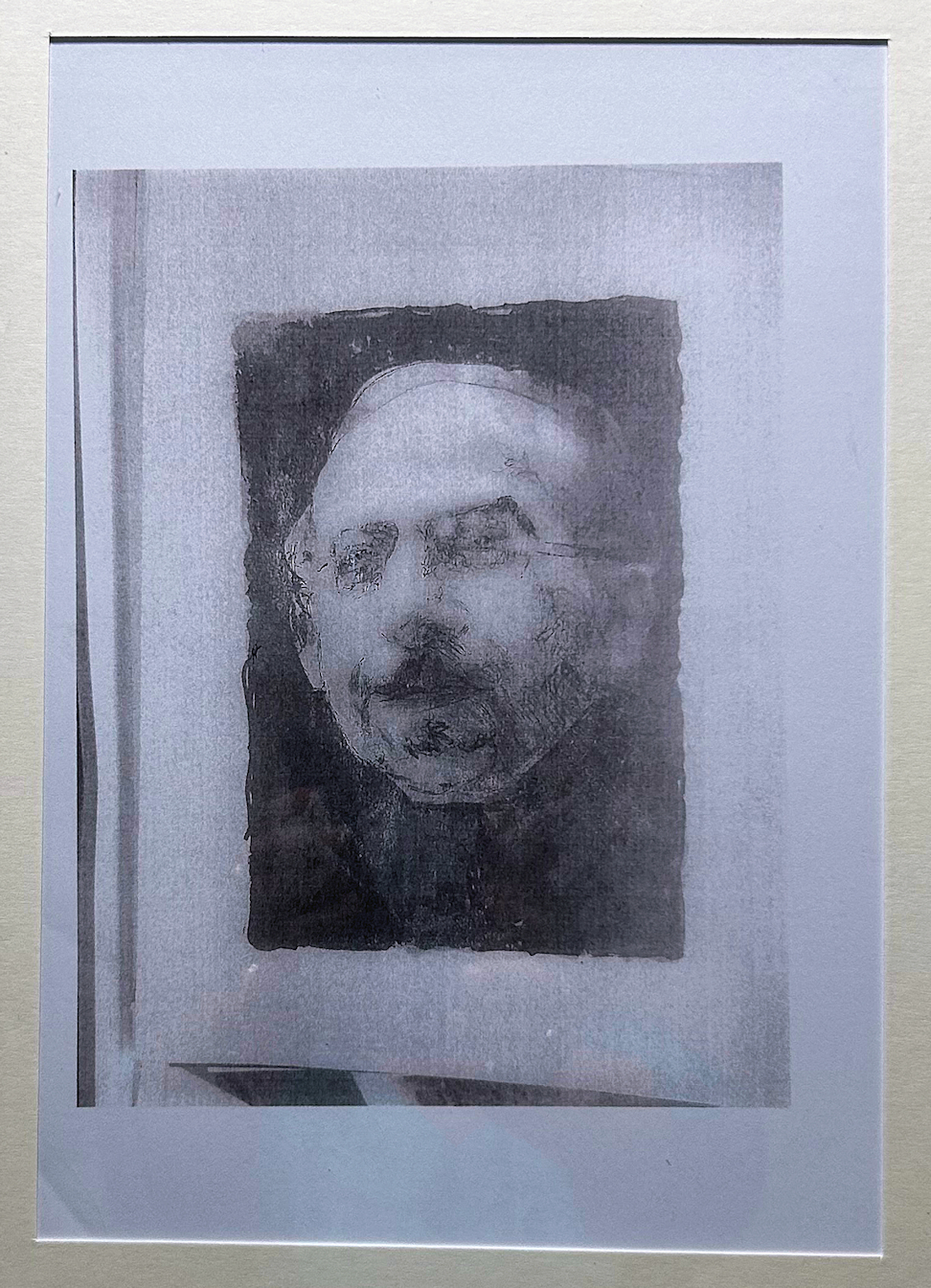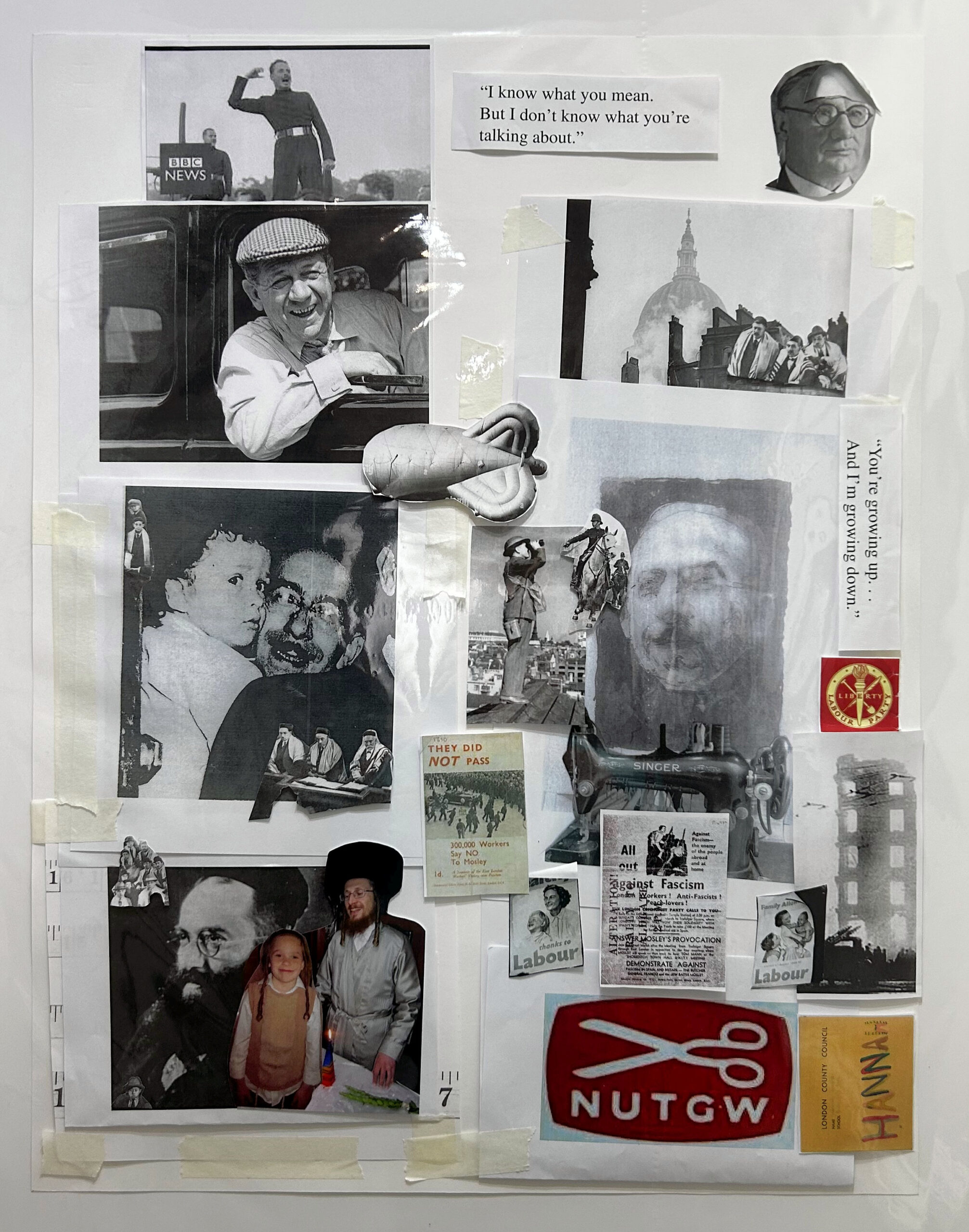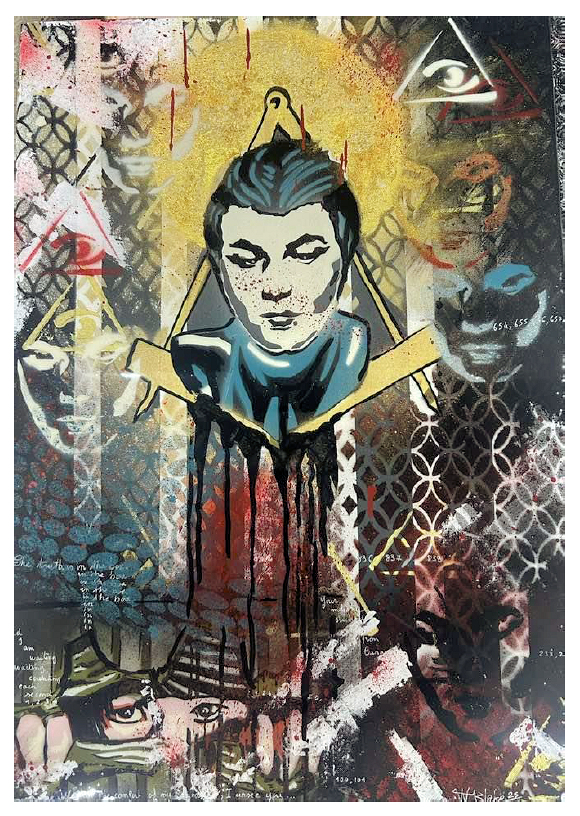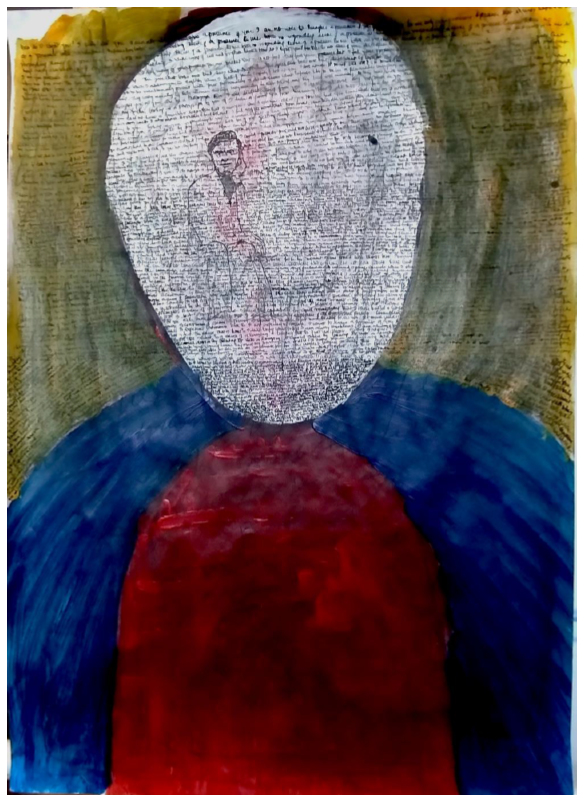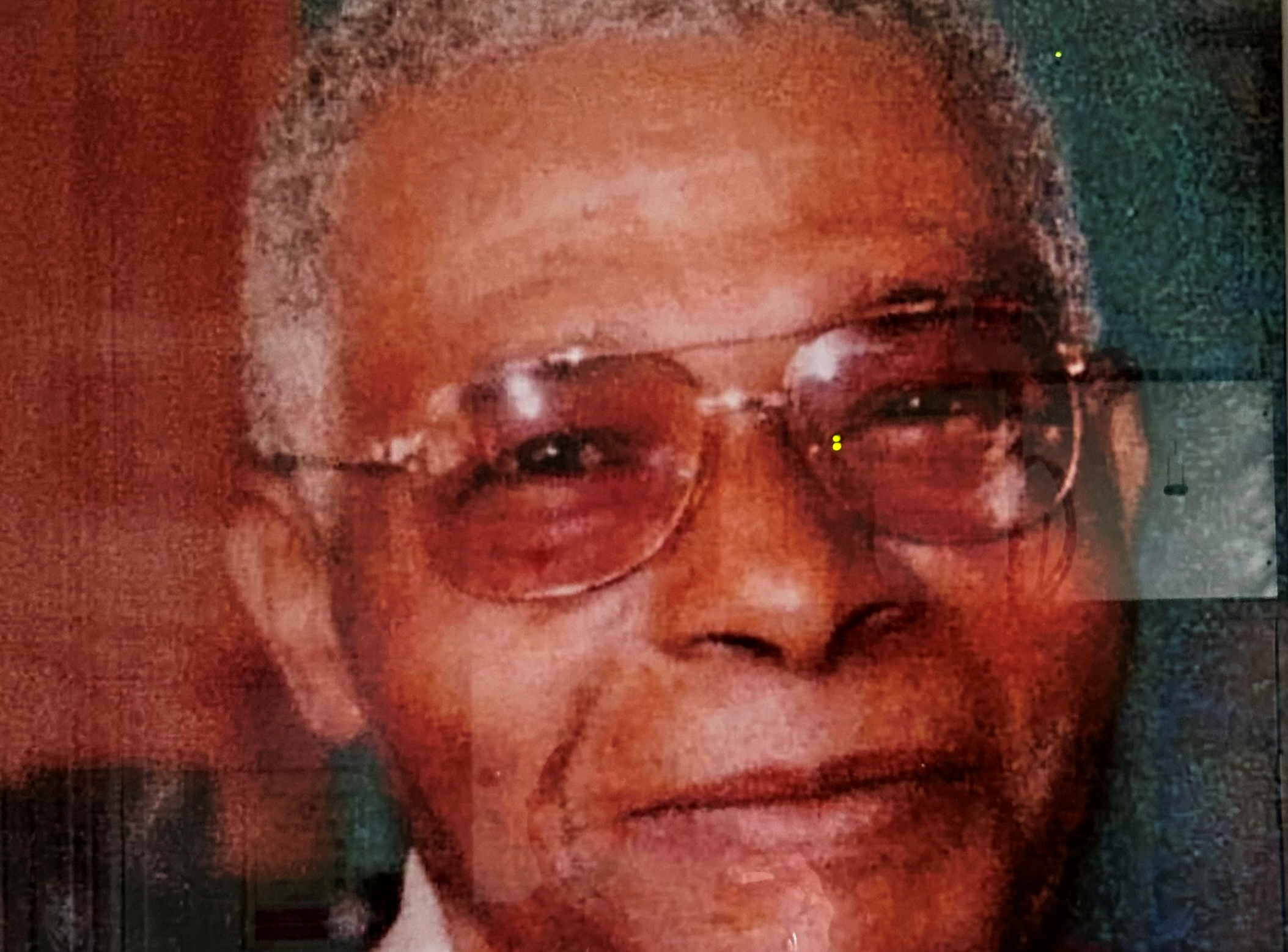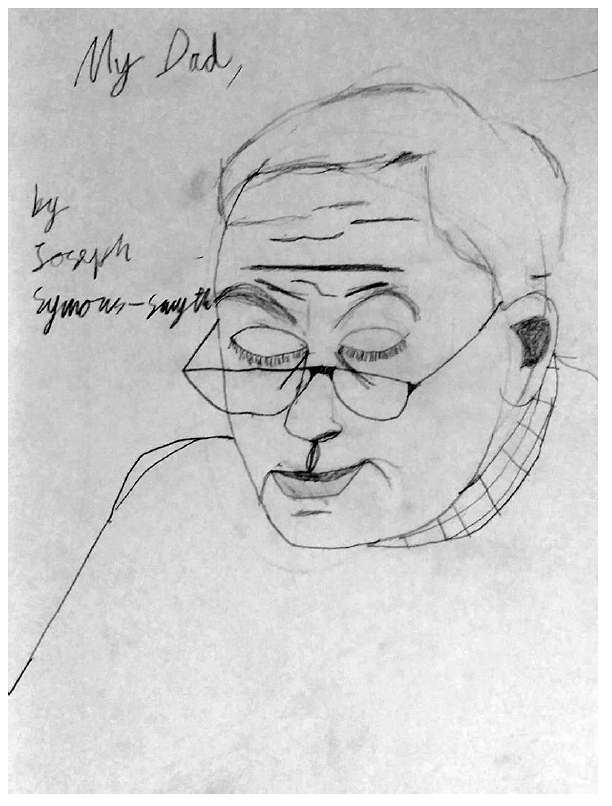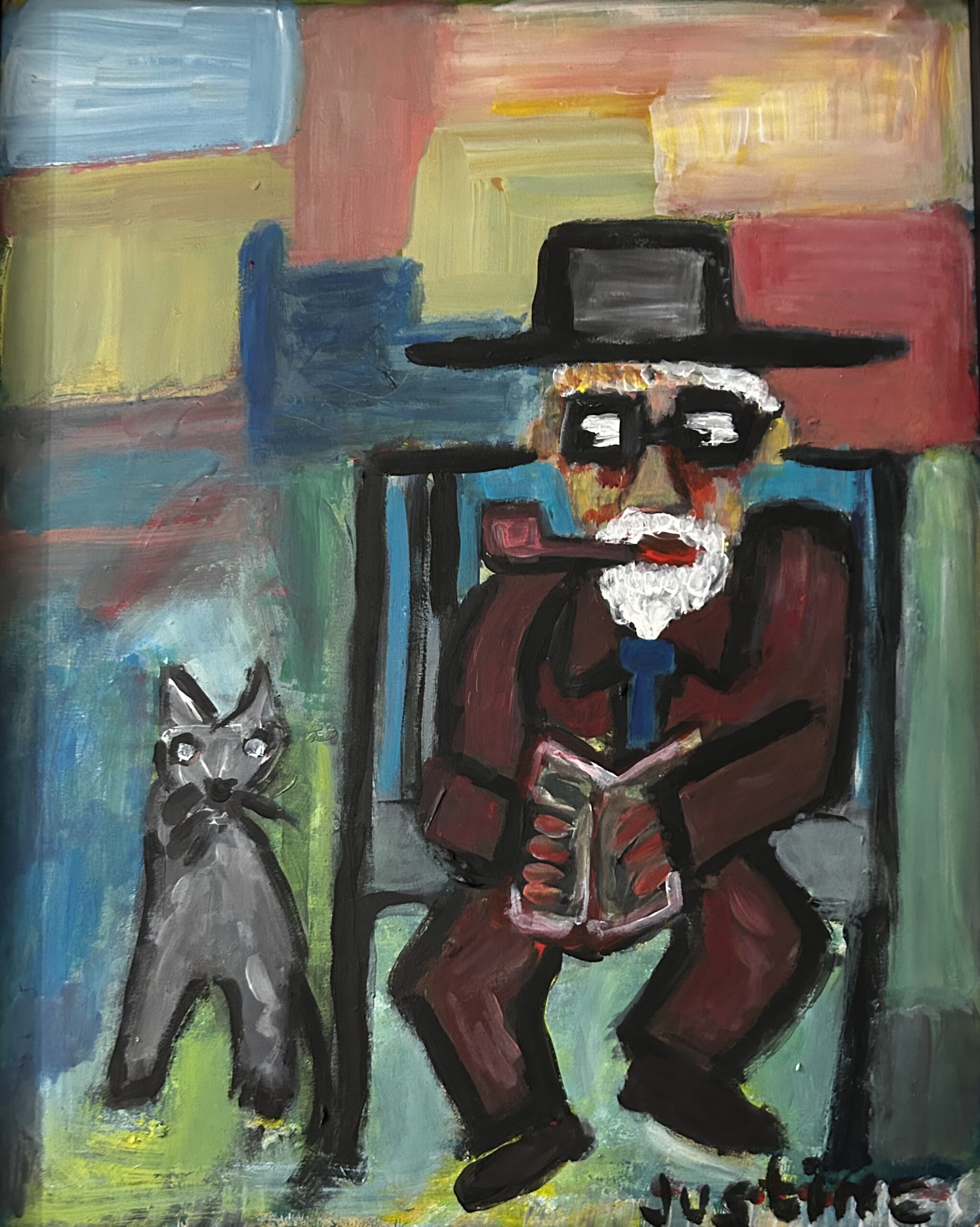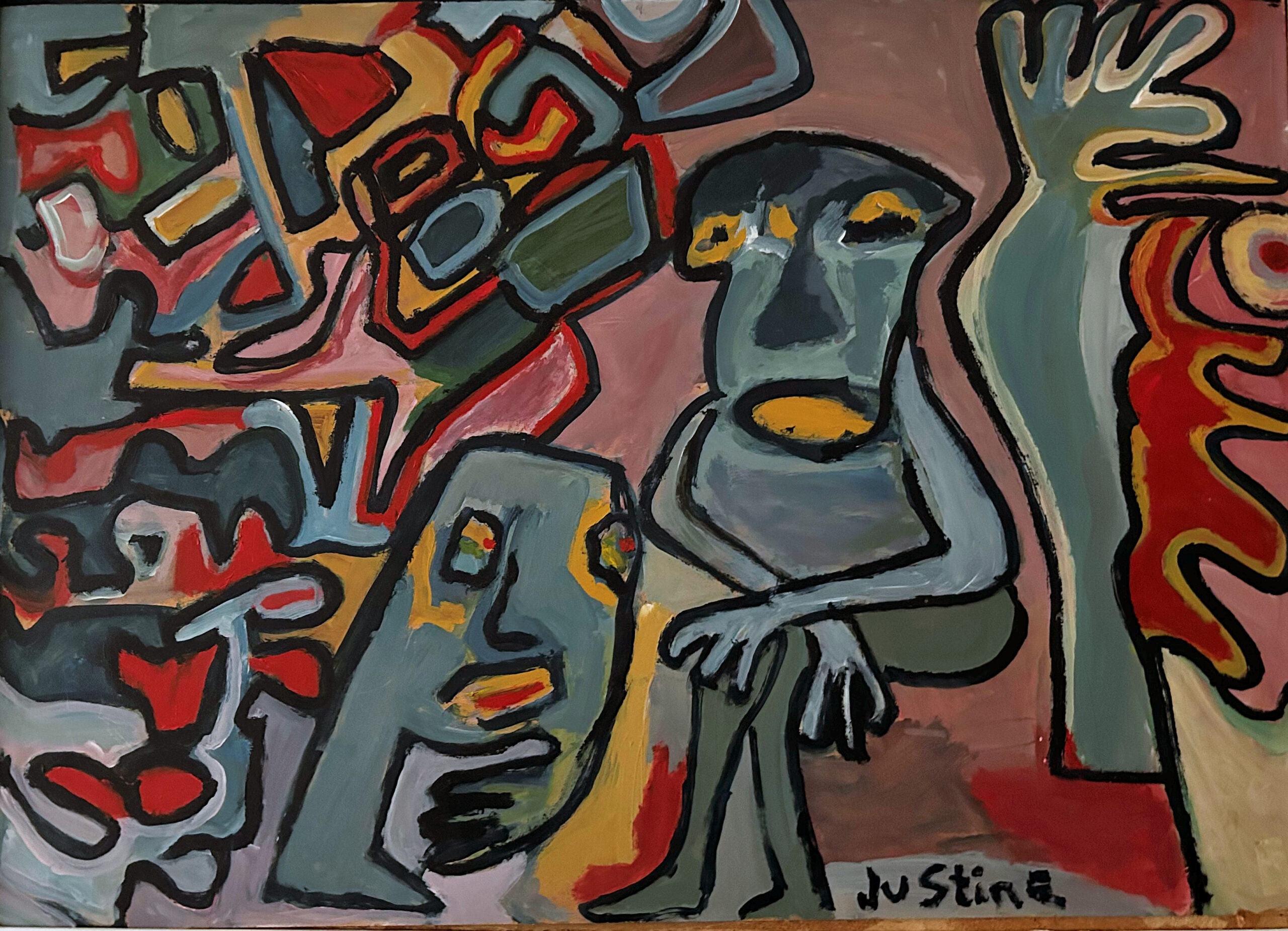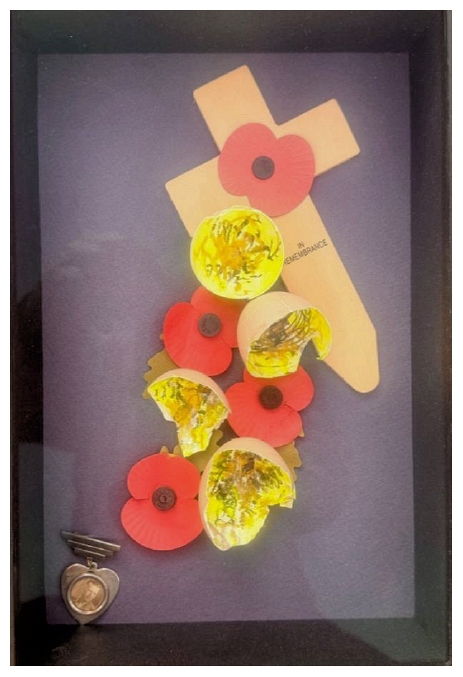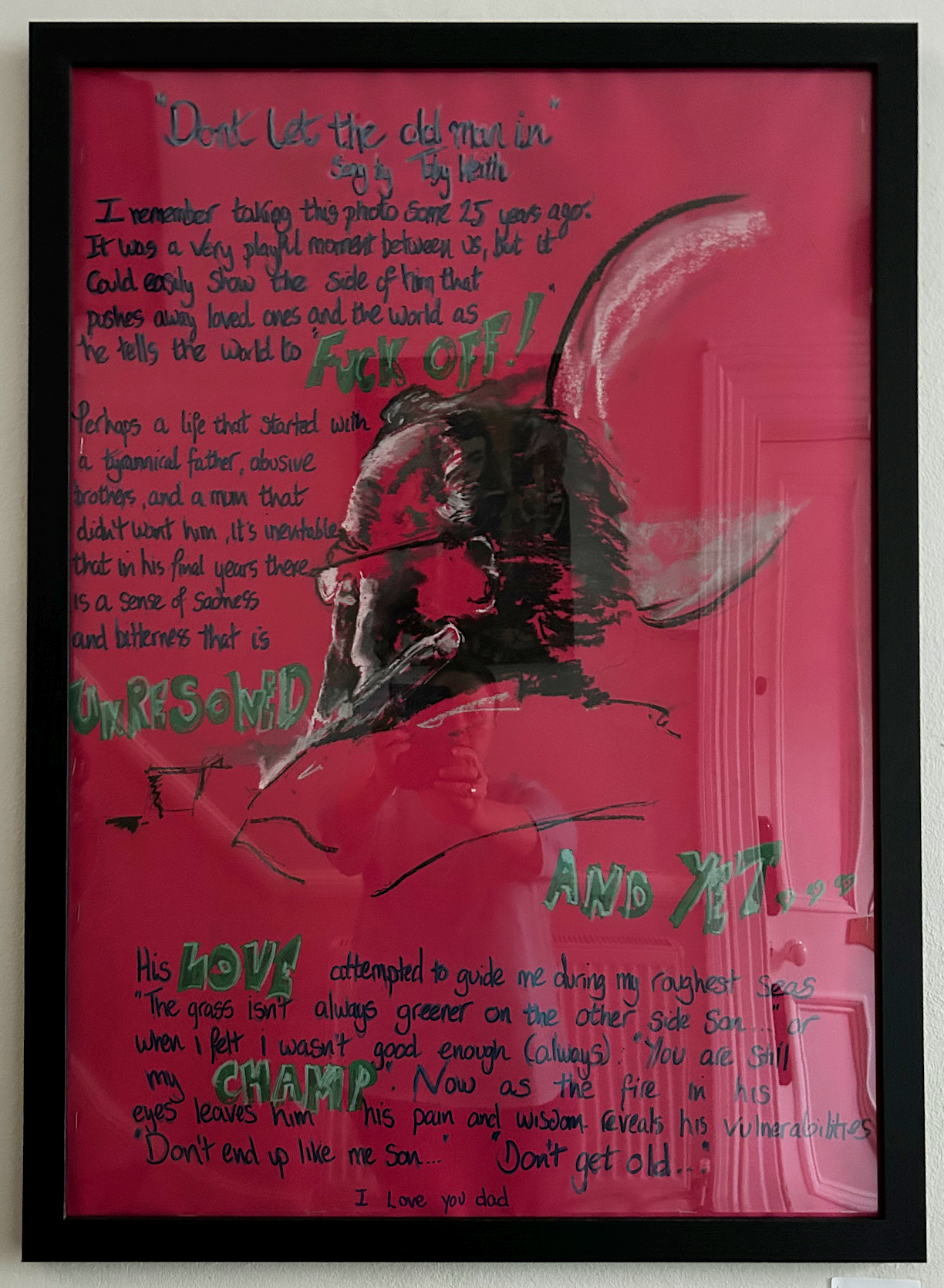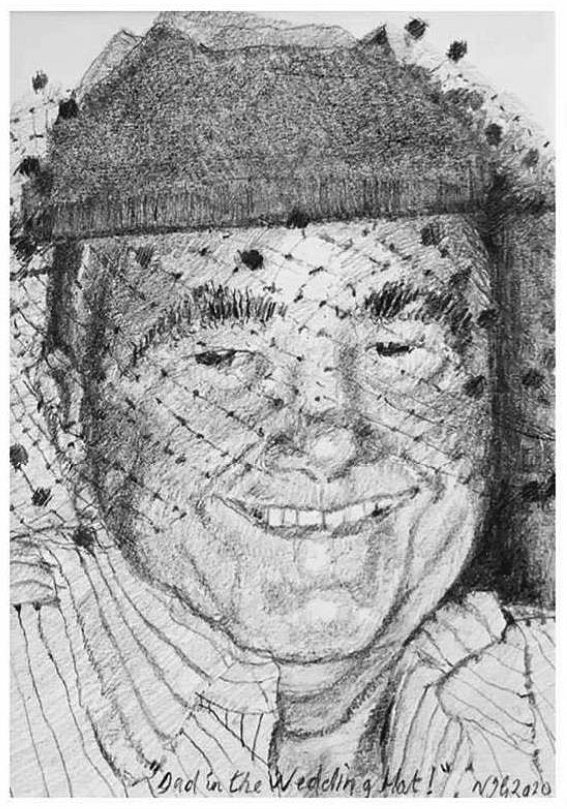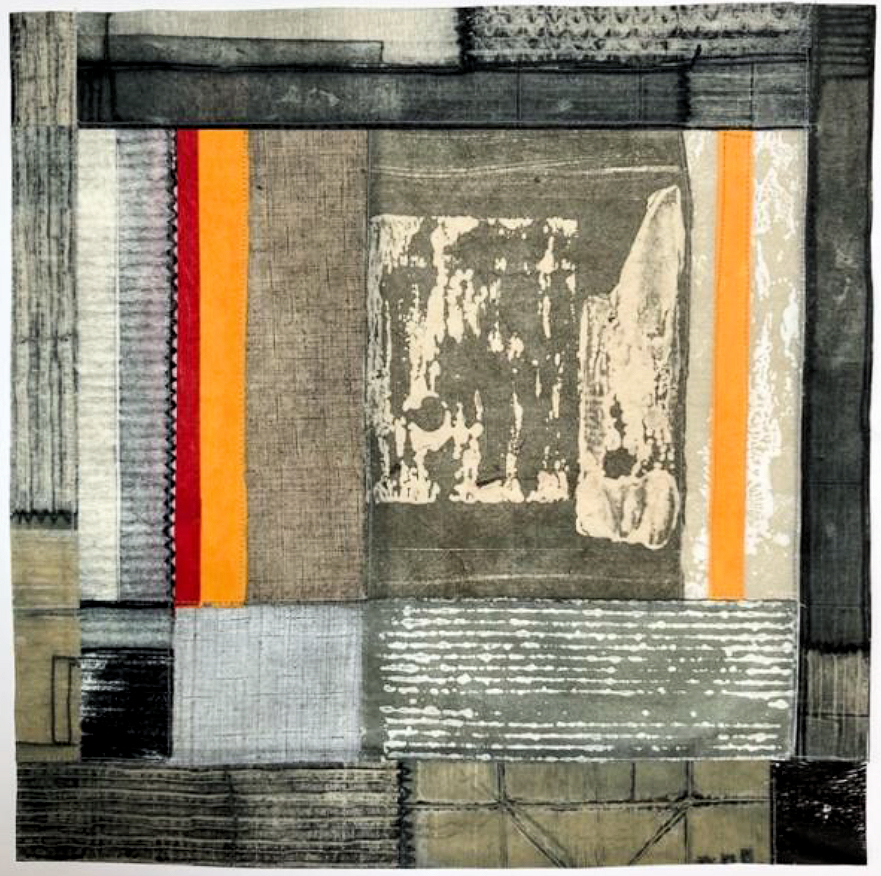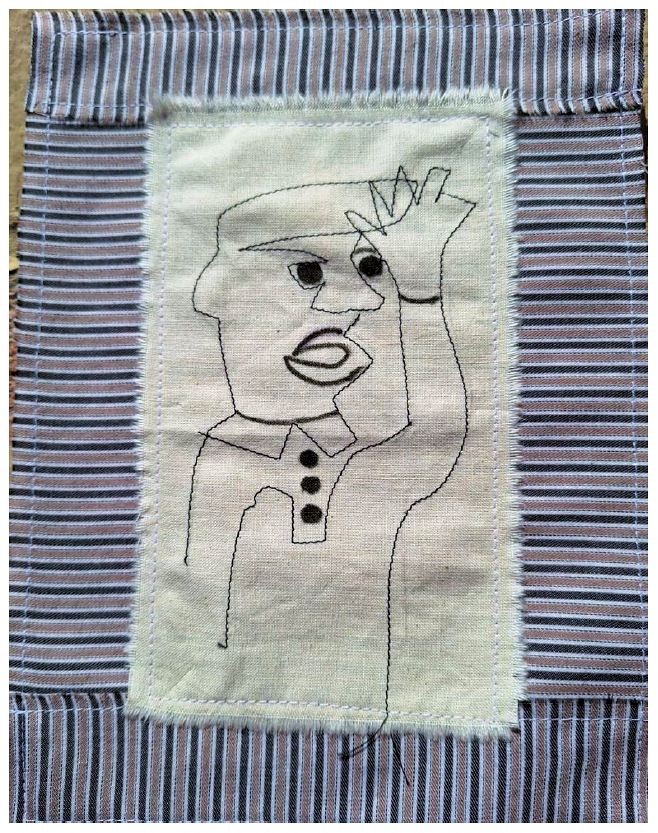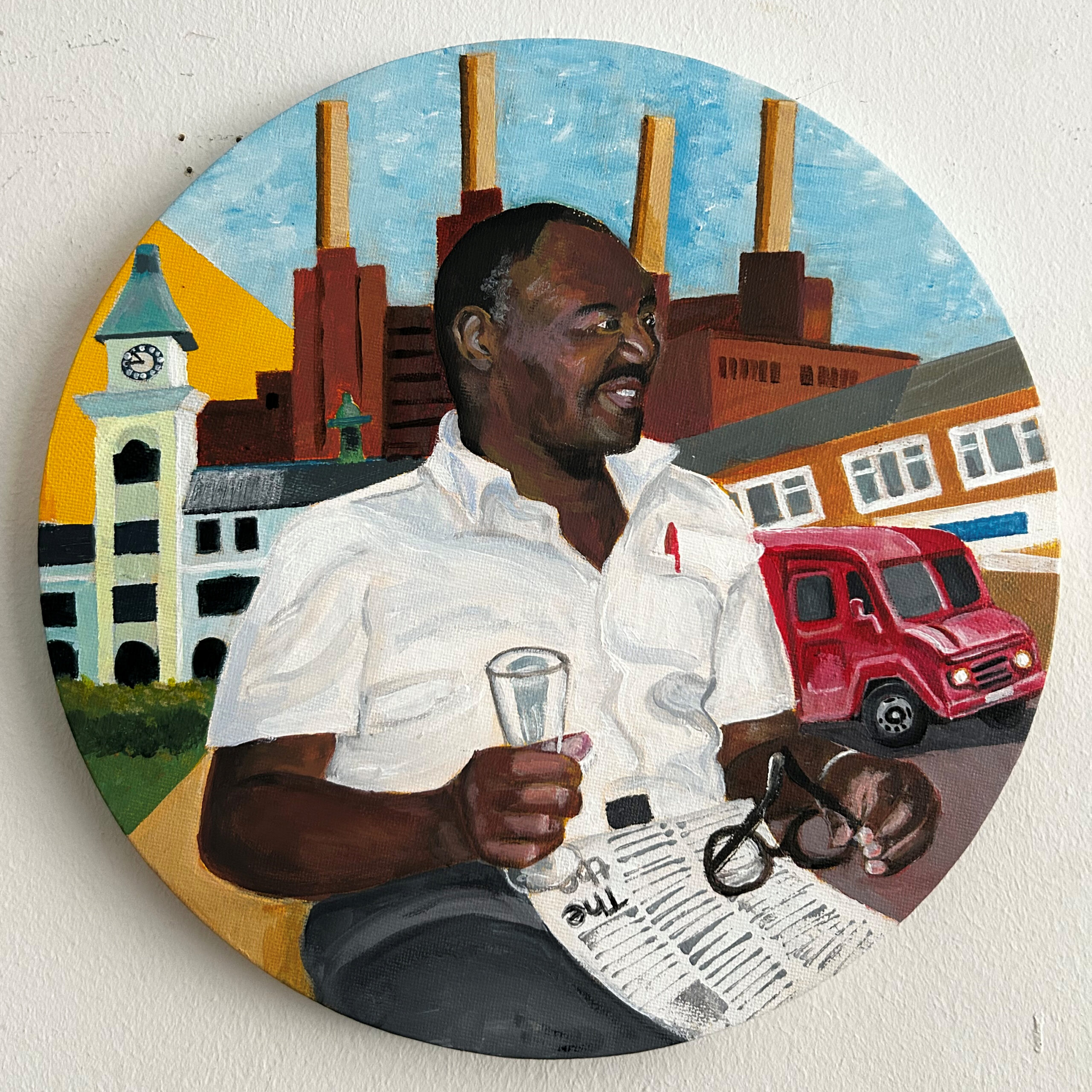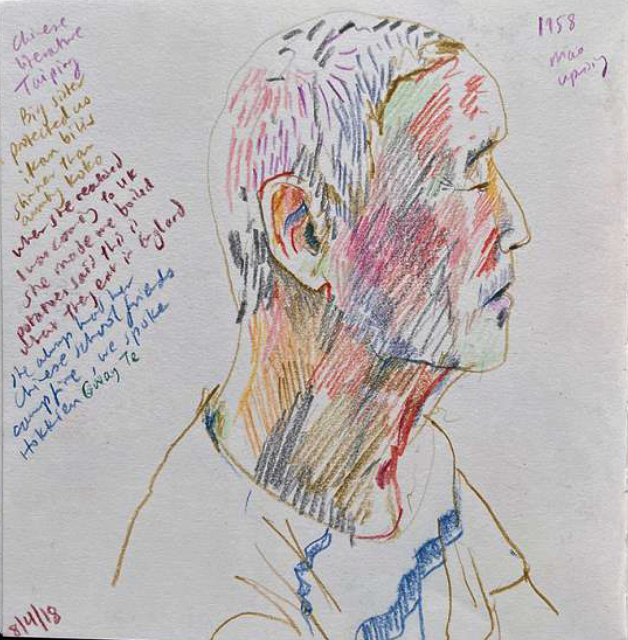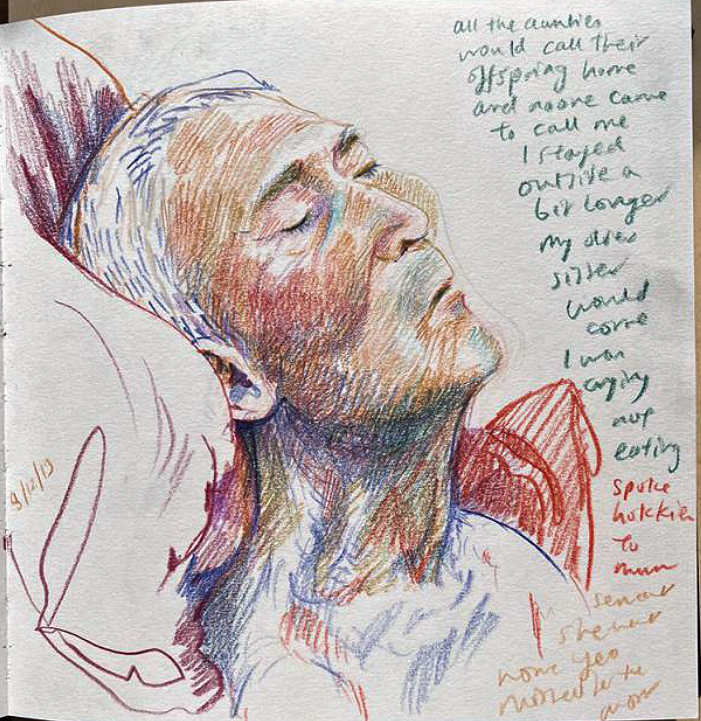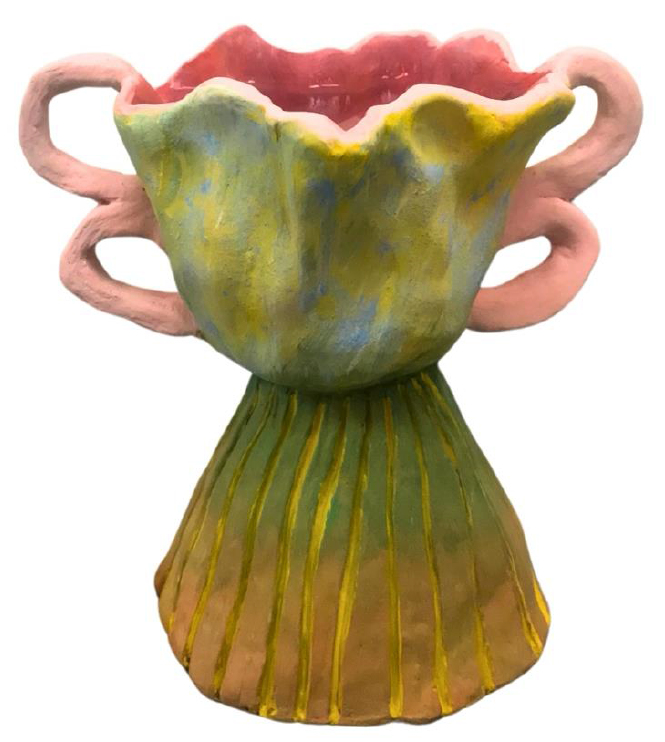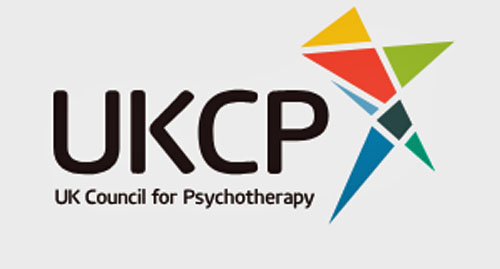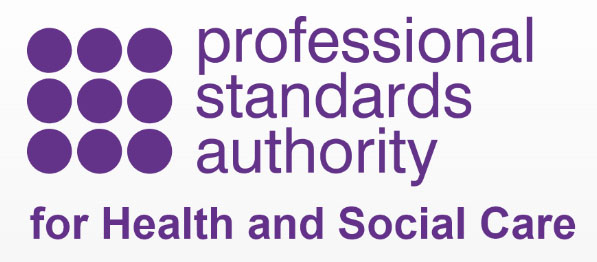A Picture of My Father
An exhibition of pictures of our own fathers
Date: 27th April – July 2025
Location: 1 Fairbridge Road, London
This topic is full to the brim with feelings, memories and the wish to tell the story – just like the experience of psychoanalytical psychotherapy.
We can see in many of the artists’ contributions how much pride and tenderness is being expressed, even from those whose experience has been painful or very painful, and the gratifying comfort of pride is not available.
All of us have had to think about the man himself from our own position and from his.
I invited people to participate whether or not they consider themselves to be artists, and whether or not Father is a comfortable concept to hold in the heart.
It’s a delight to me to be able to show work that stimulates and inspires, and disregards our impulse to assess value.
The show continues until the end of July 2025.
Judith Symons
Asher Cowan
My father and I are very similar.
We both share a love for literature, discussions and ideas. As well as having a father/son dynamic, our relationship is very much encapsulated by mutual interests.
Both he and I studied History of Art at university and he always encouraged me to develop my creativity. In this painting, I have tried to relay the character of my father in my own setting, surrounded by my own books, mess and the artworks and prints I own. A setting in which he is entirely comfortable.
When I paint, I choose colours and execute the work intuitively.
In this painting I felt that I was able to capture something specific about mv father. something which for me involves another form of thinking, namely concentration, creating form and moulding something into a unique object. I enjoy both sides of my creativity and am happy that I have both to balance each other.
In this painting I felt that I was able to capture something specific about my father, something which appeared to reflect his temperament and manner. Reading for him, especially reading for enjoyment’s sake, creates a feeling of ease within him, a relaxation which causes an atmosphere of calm which seems tangible within the room. Yet, despite the physical relaxation, his reading is never passive but always engaged.
I hope that this can be seen in my portrait of him.
Boruch Dovid
Two of the portraits of my father are separated by 70 years. The earliest was painted when I was 6 years old.
My father, Isaac Mark Simons was born in London 115 years ago in Umberson Street in the East End.
I’m aware that I didn’t know him for the first 38 years of his life,
During my lifetime, he worked twelve hours a day in a tailoring factory,
He was the kindest man I ever knew.
His own family in Poland (his parents had had a small dairy farm) were all, as far as we know, murdered first by Polish nationalists and then finished off by the German Nazis.
Rejected by the British army, he spent World War Two as a fire watcher and fireman. During the Blitz his job was to stand on roofs and tell people where to rush with buckets and any available hose whilst the bombs were falling!
He and my mother had a suicide pact in case the Germans arrived in Britain. His first child, born after 12 years of marriage, died in an accident and I popped out one year later. As their only child, I was very ‘protected’. I never had any idea that my father had ever had any difficulties in life. He was the happiest thing in my childhood. One of the things he took on when he married my mother was her mother. We lived together most of the time which couldn’t have been easy as she never spoke to him and, traumatized by horrendous Ukrainian persecutions, she would periodically enter her own inner world of horror and be up all night screaming, shouting and searching for humanity, whilst he had to get up in the morning at 5.00 a.m. to go to work. Yet he never treated her with anything other than the utmost respect.
I never heard my father ever raise his voice in anger – nor did he ever have an argument with my mother. I would get up every morning especially early to catch him before he went to work and wave goodbye. He would always make me laugh and brighten my whole day and I looked forward to his return at night when he put me to bed with songs and funny rhymes and stories.
One of his impossible tricks was to turn his head completely upside down to prove to me that his chin had become a whale or a dolphin. Magic!
Other pictures of him reflect my feelings of nearness or distance now.
It’s strange being older than him now.
In the collaged picture you can see reference to some aspects of his life. He was at the Battle of Cable Street. A non-dogmatic trades unionist without any vanity or pretensions to ideology.
He lived to see his first grandchild, Hannah, and after his passing we gave one of my sons the name ‘Mark’ (my father’s nickname) and then we also named our other son ‘Isaac / Yitzchok’ after him.
He in turn named one of his sons Motcha after my father.
It’s been a painful process to try to represent both him and how much I love him, but I feel like, in the end I got there perhaps.
Hope you enjoy them.
Shalom, his memory is always a blessing and a pleasure.
Cecile Bowie
A few words on it: the paranoiac keeps for themselves all the goodness and projects their vileness out onto others. This picture is best seen whilst listening to Radiohead’s “Man of War”.
The music video can be found here and was the leading track during the making of the painting.
I use a mixed technic and have a specific interest in graffiti/stencils on canvas as it contradicts the use of what is supposed to be ephemeral work. All work being ephemeral, I use handmade stencils that I design and draw myself and am also still inspired by French Nice’s school of Art and the “Affichistes”.
Dharmender Singh
Portrait of my father – an enquiry
Acrylic, ink on A1 paper
Hyacinth J Myers
KIND EYES – Winston George Myers
2006
My biological dad was not with us throughout my childhood, but at the age of 20, I rekindled a fledgling relationship with him. It was at this stage that my level of understanding of others began to deepen and we became closer.
The Catalyst for this change centred around forgiveness. When we do this, we can replace Resentment with Compassion and my belief is that we forgive not to let others off the hook, but to find alignment within ourselves. Forgiveness is not always easy, but it is the path to our own inner peace.
Joseph Symons-Smyth
This is a copy of a drawing in pencil on paper made by my son Joseph of his father Tom when he was around 8 years old.
Judith Symons
Justine Roland Cal
My father the Mentor. Acrylic on wood
I think that the memories of my father were very much connected with his influence He was interested in the world around him. He had great knowledge of art politics, music and literature with a great intelligence. He was empathetic and wise.
The island. Acrylic on canvas
This was inspired by an old family photo.
My father. Acrylic on board.
My father was always reading and introduced me to some of the most important books that have shaped me from James Balwin to James Joyce.
Keith Ellis
Dad
My father was born 25th July 1916, he was the only boy having two elder then a younger sister. Left school at 15 in order to work helping to support the family. He joined the British Army as an infantryman on 15th March 1940 serving in France, North Africa, Italy and Germany. He married my mother
3rd March 1945 whilst on leave. Discharged from the army 21st June 1946.
I was born 10th of December 1945 and my brother was born 10 July 1950.
I found out that my father wanted a daughter, he didn’t want a son who might have to go through what he had experienced throughout WW11. Having had me he thought, wrongly, that by bringing me up strictly would harden me and so making me resilient. Until around the age of twelve I grew up in fear of beatings and trying to understand why nothing I did appeared to meet with approval. Dad died 16th May 1960 following a long illness.
Brother Brian emigrated to Canada where he and his wife raised two boys. He died 14th November 2016. Mother died at the beginning of the Covid lockdown 7th April 2020.
The artwork represents remembrance of my lost family and how war damages.
Lee Mason
Don’t Let the Old Man In
A song by Toby Keith
Nicky Guest
Dad in the wedding hat
Pencil on paper, 30 x 20 cm
I had no drawing of my father; however a photo taken in 1989, just before my sister’s wedding, immediately came to mind.
The photo exemplifies a generous, warm-hearted man with a ready smile and great sense of humour.
My father was born Wilhelm Starek, Russia, in 1918. Later in 1957, he became ‘naturalised’ in the UK as William Stark.
1989 was a particularly auspicious year as the Berlin Wall would finally come down. A year later my father, my future husband and I would make a long journey overland to Berlin, Łódź, Warsaw and Wroclaw to reunite with his relatives after a 46 year absence.
Philomene Wales
My father, Geoffrey Wales RE, was a wood engraver, but in the early 1960s he started to make collages from his prints, also printing from found objects, partly as a collaboration with Michael Rothenstein he is (referenced in Rothenstein’s book ‘Frontiers of Printmaking’.
My images are evoked by my memories of him at that time, and his preoccupations with texture, to make what he called ‘A visual metaphor’.
The works are collaged from fragments of my own prints, reflecting the fragmented memories from that time.
Veronica Lindsay-Addy
Dad Doffs His Cap
Stitched calico and shirt fabric, plus fabric pen.
What can I say about my dad? My dad is a 93 year old gentleman, born in Ghana, as a British Citizen. He was educated at the prestigious public school, Achimota, where he excelled (at least in maths) both academically and in sports, cricket to be precise.
He came to England in 1951 to study engineering, only returning to his homeland twice; 1968 and 1969 for his parents’ funerals. He was the black sheep of the family having married a white woman in 1958.
My dad was not welcome here, there or anywhere. So he felt. Not by his father, not by my mother’s father, and not by his adoptive country: No Irish, No blacks, No dogs. Despite his experiences my dad has remained, kind, polite and a hard working citizen. He would have liked to have been a Black British man but has always felt an outsider.
My Father’s World
Acrylic on 12” circular canvas
My father’s world from Achimota School Ghana to retirement in London.
It’s difficult to know how, where or when to start a portrait of my father’s life when it spans 9 decades. Whilst mulling this over I rooted through my art supplies which turned up a circular canvas. Words that came to mind: sun, world, turning of the seasons, time passing. Starting with the sun I painted the whole canvas deep cadmium yellow, representing the warmth and light around the equator.
What next? My dad’s education at boarding school which played a significant role in forming his adult character. He learnt to be self-contained but also loyal in relationships. The school was run along military lines so: making beds, scrubbing toilets etc was part of the routines of daily living. So, on the domestic front my dad is a keeper or order, cleanliness and routine, also the most assiduous ironer I know. He always looks immaculately turned out.
Battersea Power Station took up a major part of his working life employed as an engineer. The position of the station behind him is almost throne-like, not intentional in that sense, but then made me think of paying homage to those men who worked in tough, dirty environments to provide us with comfort. He worked 12-hour shifts, days and nights, Christmas Day sometimes much to our disappointment.
He was made redundant in 1983 on the decommissioning of Battersea, moving to another national industry job at The Post Office. The highlight was delivering mail to 10 Downing Street, though he never got beyond the front door, just a quick glimpse of the hall. He remained in post until retirement.
Outside of work he is a voracious reader of newspapers, and now an avid watcher of news from around the world via cable television. When I visit him, he will rarely be without a paper spread out on the dining room table, pen in pocket ready to make notes and a notebook or two. Though I’ve shown him with a drink in hand, he rarely drinks alcohol; if he does it will be in a celebratory event. I wanted this to be a celebration of his life, so though not typical it seemed appropriate.
The aspect of art I love is the way it creates an additional layer of connection for me, especially when portraying someone I know. It is a great way of looking at thoughts, taking time to consider and on this occasion has reminded me how proud I am of my father’s steadfastness. I think this is the strongest characteristic I have inherited from him.
Yael Roberts
When I think of my father I think of the Jewish ritual of Kiddush, a prayer over wine which sanctifies the Sabbath and festivals. This cup is a portrait of him, but is also his kiddush cup. He was always meticulous about filling the cup to the very top, because of the line from Psalm 23: “My cup is overflowing.” As a nod to that, I have filled this cup with water to the brim. The water in the slip painted clay looks like wine, but it is only water. The water will evaporate as the exhibition takes place, a nod to my father’s aging.


